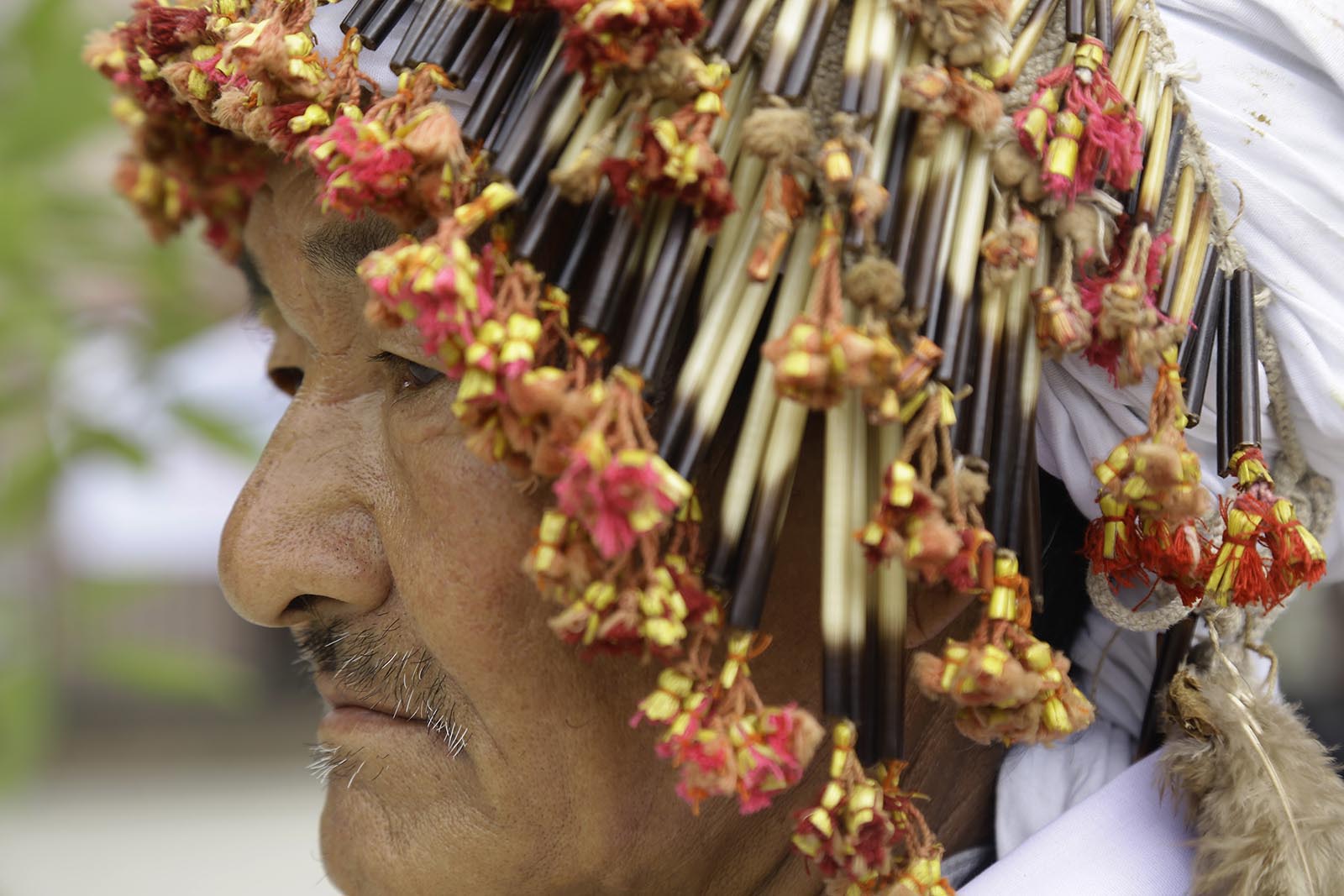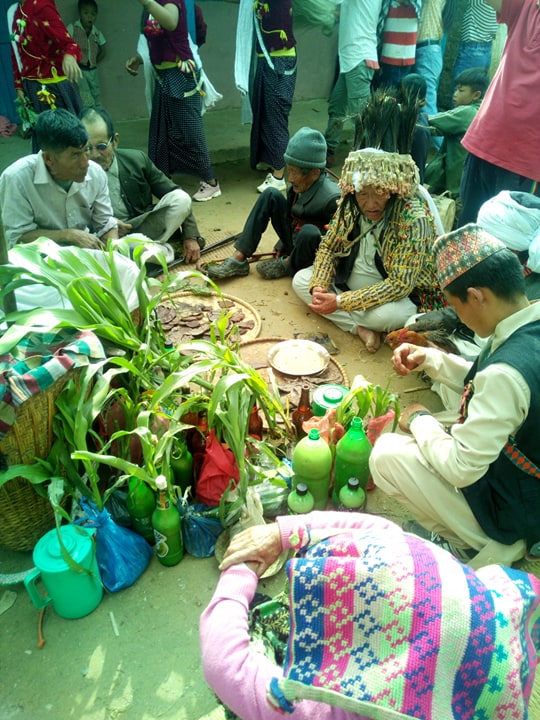The Dumi people use Dumi Radu ‘Dumi Rai’ as an endonym in their mother tongue, which is the name most exclusively used for both the language and its speakers. There are 21 pachha ‘clans’ under the seven (7) Same ‘lineages’ in the Dumi ethnicity. The geographical boundary of Dumi includes other Kirat Rai communities like Thulung [tdh], Khaling [klr], Koyee [kkt], Sampang [rav], Nachhiring [ncd], Chamling [rab], etc. spoken in the surroundings of the Dumi speaking area. So, the Dumi people are in day–to–day contact with these Kirati languages of the Rai group in the respective areas in socio–cultural and other daily activities. The total population of Dumi is 12,000 in Nepal (Eppele et al. 2012: 45). The latest CBS report 2011 shows the total population of Dumi is 7,638 of which only 2,500 (i.e., 32.7%) of the total population speak their language ‘Dumi’ as their mother tongue.
The Dumi language
Dumi is a less documented Kirati language spoken by an indigenous nationality referred to as ‘Dumi Rai’ inhabiting the hilly region of Khotang district, particularly, in the area around the Tap and Rawa rivers and their confluence in Sagarmatha zone of eastern Nepal. Among 25 different Kirat Rai speech communities, Dumi (639–3: dus) belongs to the western Kirati group of astern Himalayish sub-branch of the Tibeto–Burman branch under the Sino–Tibetan language family. Eppele et al. (2012: 45–46) claims that there are three dialects: Kharbari (i.e., Jalapa), Lamdija (i.e., Baksila) and Makhipa (i.e., Makpa). Typologically, Dumi is one of the pronominalizing Kirati languages of the Rai group, carrying person and number indices in the verb root. It is syntactically a verb-final split ergative language.
Dumi Kirat Rai Funsikim (DKRF)
It is a social organization of Dumi Kirat Rai people established in 2055 BS (i.e., 1998 AD), a registered organization from His Majesty the Government with a clear view of preservation, promotion and development of language, culture, history and genealogy of the Dumi Kirat Rai by organizing them under the umbrella organization named Dumi Kirat Rai Fusikim, but informally it was working since 2042 BS (1985 AD), which is the outcome of the indigenous voices.
Dumi Kirat Rai is an indigenous group of the Kirat Rai People of Nepal. Before the unification of Nepal, Dumi ancestors were local ruler of northern Khotang district in their homeland. It is important to note down that among the multilingual Kirat Rai ethnicity, there are around two dozen language communities. The majority of Dumi people live in Khotang district of eastern Nepal, particularly in Kharmi, Jalapa, Baksila, Sapteshwor, Makpa, Kubhinde, Diktel and Nerpa. Similarly, they live in 14 districts of the province one in east Nepal. Abroad, the major geographical region like Darjeeling, Sikkim, Assam, Burma and beyond that the advanced countries like the USA, UK, Hongkong, etc.
The dialectic meaning of “Dumi” indicates multi meanings like organization, association, gathering to meet together, etc. but chronologically it signifies a name of a person or individual. Dumi is the Head people succeed from Tumsolihang. The other meaning of Dumi indicates the name of the place where ancestors of Dumi gathered together in a place of having big stone facilitated by water nearby Simpani village, Khotang district. Simpani means the main source of water. This historic stone is called Dunkulu (stone of meeting point). It is still as if as it is. Dunku is derived from Dunki ‘met together/gathered/accumulated’ and lu ‘stone’.
There are two words lu denote the cultural and religious stone like suptulu or tinchula ‘Three stone’ kept oven. In the same way, the different Sames and Pachas of Dumi ethnics gathered in the surrounding of the stone so they began to say ingki dungki lu ‘we met at this stone’. Ultimately, the stone also was called “Dungkilu” (stone of meeting point). According to the ancestor, instead of saying Dungkulu, it is also known as Dumilu. It means the term Dumilu is derived from Dungkilu.
The term, Kirat is a large umbrella term, including Rai which covers Sunuwar, Limbu, Yakkha in a narrow sense. They are very proud to be called Kirat. In a broad sense, at some point of time, all the Mongols were called Kirat. The term Funsikim is Dumi dialectic meaning like an association, organization, gathering, meeting, etc. So ‘Dumi Kirat Rai Funsikim (DKRF)’ is a common Organization or forum of the Dumi Kirat Rai people.


